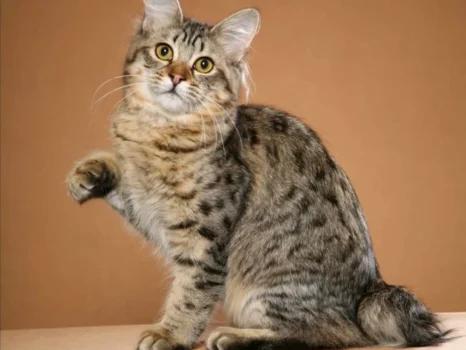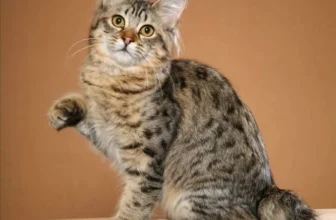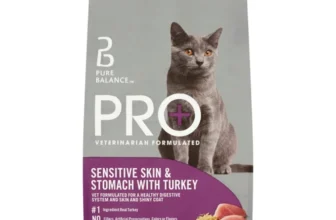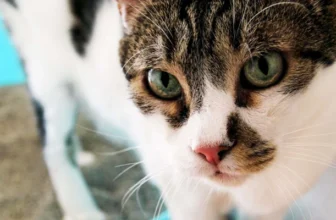As pet owners, we all want the best for our feline companions, including ensuring their optimal health. However, it’s not always easy to recognize signs of obesity in American Bobtail cats. Obesity can lead to serious health complications, such as diabetes, arthritis, and heart disease. In this article, we will explore the causes, symptoms, health risks, prevention, and treatment of obesity in American Bobtail cats. By the end, we hope to provide you with the knowledge and tools necessary to help your furry friend maintain a healthy weight and live a long, happy life.
Causes of obesity in American Bobtail Cats
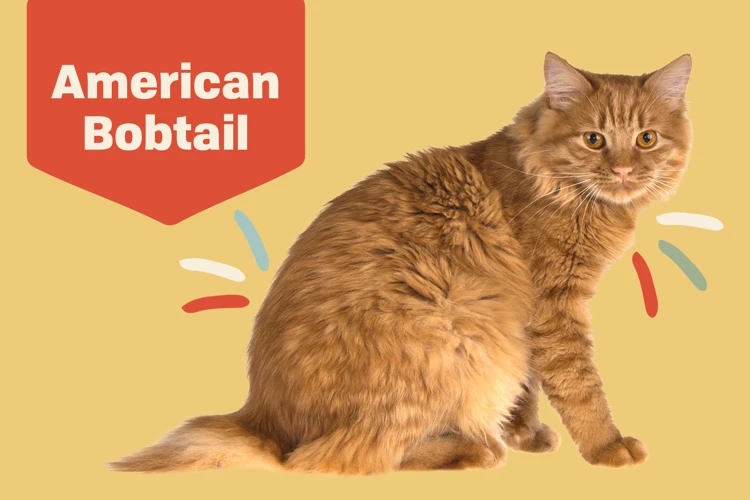
It can be easy to spoil our beloved American Bobtail Cats with treats and snacks, but overindulging can lead to obesity and potentially serious health consequences. Obesity in American Bobtail Cats is a prevalent issue that many cat owners face. It is important to understand the causes of obesity to prevent it in our furry friends. In this section, we will explore the factors responsible for cat obesity, including overfeeding and free-feeding, lack of exercise, and breed and genetics. Understanding these causes will help cat owners take the necessary steps to prevent obesity and ensure their cats live a healthy and happy life. To learn more about the signs and risks of obesity in American Bobtail Cats, check out our article on Health Risks of Obesity in American Bobtail Cats.
Overfeeding and free-feeding
Overfeeding and free-feeding are the leading causes of obesity in American Bobtail cats. Overfeeding occurs when cats are given more than the recommended amount of food daily. Free-feeding, on the other hand, is when food is available to the cat at all times, and they can eat whenever they want. These feeding practices are especially dangerous for indoor cats, who do not have a lot of opportunities to engage in physical activity.
If you are not careful with feeding, you could end up with an overweight or obese cat, which is why it’s essential to follow the recommended feeding guidelines. American Bobtail cats should only be fed specific daily amounts of food, according to their age, weight, and activity level. Generally, dry food is recommended over wet food since it has fewer carbohydrates and calories.
It’s also crucial to avoid giving your American Bobtail cats table scraps or other unhealthy human foods since they can add unnecessary calories and affect the cat’s digestive system. Be sure to keep treats to a minimum and use them to reward good behavior.
To prevent overfeeding, use measured feeding bowls or food dispensers. It’s also essential to keep track of how much you’re feeding your cat throughout the day. If your cat is still hungry after their meal, try dividing their food into smaller portions more frequently.
In addition to overfeeding and free-feeding, other factors can contribute to obesity in American Bobtail cats. These can include lack of exercise and genetics. Understanding and addressing these factors can help reduce the risk of obesity in your feline friend.
If you suspect that your American Bobtail cat is overweight or obese, be sure to check out our article on obesity signs in American Bobtails for more information. To prevent obesity, take a look at our article on preventing obesity in American Bobtail cats. For exercise tips for overweight Bobtail cats, take a look at our article on exercise tips for overweight Bobtail cats. And remember, regular veterinary checkups are essential for the health and wellbeing of your feline companion.
Lack of exercise
A lack of exercise is another common cause of obesity in American Bobtail cats. These cats are active and playful by nature, so not giving them enough opportunity for exercise can result in weight gain. Many cat owners make the mistake of assuming indoor cats get enough exercise just by being inside the house. However, this is not the case. Indoor cats tend to live a more sedentary lifestyle, especially if they do not have enough toys or space to play.
To combat this issue, it is important to provide your American Bobtail cat with plenty of toys and opportunities for physical activity. You can give your cat different toys to play with, such as toy mice, catnip toys, and feather wands. Providing cat trees or scratching posts can also encourage your cat to jump and climb, which are great forms of exercise. Additionally, playing with your cat and engaging them in active games like chasing a laser pointer or toys can help get them moving.
If your cat is used to living a sedentary lifestyle, you should gradually increase their level of activity. It’s essential to start slow and gradually increase exercise levels to prevent injury. You can do this by setting aside specific times each day for play and gradually increasing the duration and intensity of the activities.
Regular exercise not only helps prevent obesity but also provides many other health benefits for American Bobtail cats. Regular exercise can improve their cardiovascular health, enhance their immune system, and keep their muscles strong and healthy. By following a regular exercise routine, you can ensure your American Bobtail cat stays healthy, happy, and active.
For more information about Obesity in American Bobtail Cats, read our article Obesity in American Bobtail Cats: Causes, Symptoms, and Treatments. And if you’re looking for ways to reduce obesity in American Bobtail Cats, don’t miss our article 5 Tips for Reducing Obesity in American Bobtail Cats.
Breed and genetics
Breed and genetics are another significant factor that contributes to the obesity of American Bobtail cats. Some breeds are prone to obesity more than others. For example, American Bobtail cats with Burmese or Siamese genetic heritage are more likely to become obese.
Here are some of the reasons:
- Lower metabolic rate: Some cat breeds have a naturally slower metabolism, which makes them more prone to weight gain.
- Higher appetite: Certain cat breeds have a greater appetite than others, which can lead to overeating and subsequent obesity.
- Hormonal imbalances: Hormonal imbalances caused by genetics can affect a cat’s metabolism and increase the likelihood of obesity.
It is essential to understand your cat’s breed and genetic background when developing a plan for weight management. Feeding American Bobtail cats with a balanced diet and ensuring they get plenty of physical activity can help prevent weight gain, regardless of their breed or genetics. However, if your cat is obese and shows signs of related health issues, it is crucial to seek veterinary medical advice to ensure a safe and effective weight loss plan.
Symptoms of obesity in American Bobtail Cats
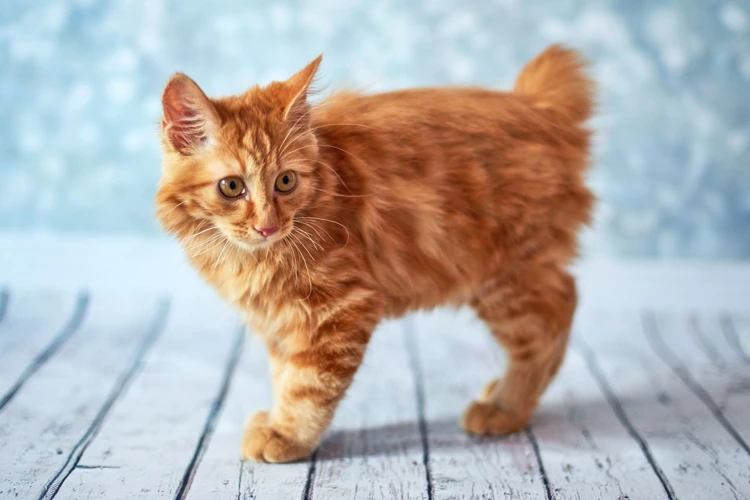
It’s not always easy to tell if your American Bobtail cat is overweight. However, obesity in cats can lead to a wide range of health issues, making it important to be able to recognize the symptoms. Here are some indicators to look out for that may suggest your feline friend is carrying a few extra pounds.
Waddling gait
As a pet owner, it’s crucial to observe your American Bobtail Cat in order to detect symptoms of obesity. One of the most noticeable signs is a waddling gait, which can be described as an abnormal and unsteady walk.
This is caused by the excess weight on your cat’s joints and muscles, making it difficult for them to move around normally. The added pressure on their legs can also lead to pain and discomfort, which can further decrease their mobility.
If you notice your American Bobtail Cat displaying a waddling gait, it’s important to take action as soon as possible. Ignoring this symptom can lead to more severe health issues and worsen their obesity.
To help alleviate the symptoms of a waddling gait, you should consider implementing a weight-loss plan. Your veterinarian can help you create a customized diet and exercise regimen specifically for your cat’s needs. Remember, consistent monitoring and veterinary check-ups are key to ensuring your cat’s health and well-being.
Here’s a table summarizing the causes and potential solutions you can implement:
| Causes of Waddling Gait | Solutions |
|---|---|
| Obesity | – Weight-loss plan – Regular exercise – Portion control |
| Pain and discomfort | – Consult with veterinarian – Prescribed medication – Physical therapy or rehabilitation |
Remember, detecting symptoms early and implementing effective solutions can greatly improve your American Bobtail Cat’s quality of life.
Difficulty breathing
One of the symptoms of obesity in American Bobtail Cats is difficulty breathing. This can occur due to excess fat around the chest and abdomen area, putting pressure on the lungs and making it harder for the cat to take in enough oxygen.
Signs of difficulty breathing:
| Panting: | Bobtail cats with breathing difficulties tend to pant more than usual. Panting is a common symptom of respiratory problems in cats. |
| Shallow breathing: | Cats with breathing problems may also exhibit shallow breathing, which means they take more breaths than usual but each breath brings in less oxygen. |
| Coughing or wheezing: | Breathing difficulties may cause coughing or wheezing, which is a high-pitched whistling sound that comes from their breathing. |
Causes of difficulty breathing:
Excess fat around the chest and abdomen area is the most common cause of breathing difficulties in American Bobtail Cats, but other underlying health conditions may also contribute to this symptom. These include:
| Asthma: | Asthma is a respiratory condition that causes the airways to narrow, making it harder for cats to breathe. Obese cats are more susceptible to asthma than cats with a healthy weight. |
| Heart disease: | Obesity can lead to heart disease, which can cause breathing problems in cats. Heart disease is a serious condition that requires veterinary treatment. |
| Upper respiratory infections: | Cats with breathing problems may also have an upper respiratory infection. This type of infection can cause coughing, sneezing, and difficulty breathing. |
It’s important to monitor your American Bobtail Cat for signs of difficulty breathing and to seek veterinary treatment if you notice any of the symptoms. Obesity can lead to serious health complications, so it’s crucial to help your cat maintain a healthy weight through a balanced diet and regular exercise.
Increased sleep
One of the symptoms of obesity in American Bobtail Cats is an increase in sleep. While cats are known for their tendency to nap, excessive sleeping may indicate that they are not getting enough exercise or that they are carrying too much weight, leading to a decrease in energy levels.
To determine if your American Bobtail Cat is sleeping more than usual, it is helpful to keep track of their sleeping habits. Create a table to record the time your cat spends sleeping during the day and night, and compare the results over time. If you notice an increase in sleep, it is important to take action to address their weight and ensure that they have a healthy lifestyle.
Increased sleeping can be a sign of other health issues as well, so it is important to look out for other symptoms and consult with a veterinarian. Overweight cats are at a higher risk for developing sleep apnea, a condition where they stop breathing during sleep, so it is important to monitor their breathing as well.
If you notice an increase in sleep in your American Bobtail Cat, it is important to take steps to address their weight and encourage more activity. Consult with a veterinarian to determine the best course of action and make a plan to help them get back to a healthy weight.
Belly sagging
One of the symptoms that an owner of an American Bobtail cat may notice if their cat is obese is a sagging belly. This can be a result of excess fat deposits in the abdominal area. The belly may hang down and even sway when the cat walks. This is not only a cosmetic issue but it can also be uncomfortable for the cat.
Here are some things to look for:
- The most noticeable sign is a protruding belly that sways when the cat is walking.
- The skin may appear stretched and dimpled or puckered.
- Cats may experience discomfort or pain in their abdominal area due to the extra weight they are carrying.
- In extreme cases, your cat may have difficulty maintaining proper hygiene in the area, and skin irritation or infection can occur.
If you notice that your American Bobtail cat has a sagging belly, it is important to consult with your veterinarian to monitor their health and develop a plan to promote weight loss. Obesity, including a sagging belly, can increase the risk of various health problems for your cat, such as diabetes, heart disease, and arthritis.
Health risks of obesity in American Bobtail Cats
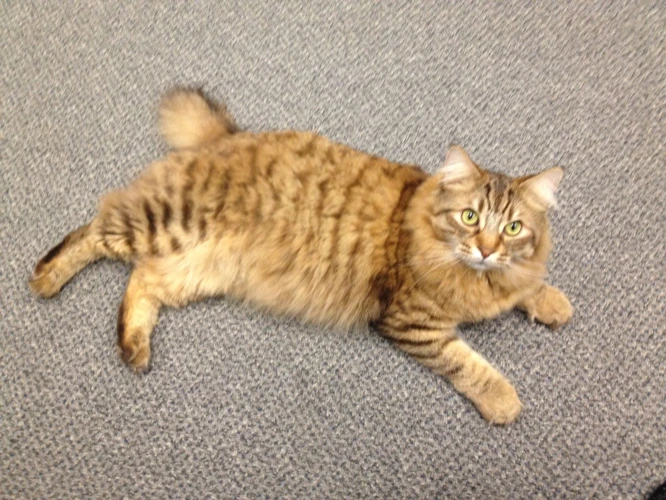
As with humans, obesity in American Bobtail Cats poses serious health risks that can adversely affect their quality of life. The extra weight on your furry friend puts them at risk for developing various health conditions that can be costly and challenging to treat. It is essential to understand the risks associated with obesity in American Bobtail Cats to be proactive in addressing the issue before it’s too late. In this section, we will discuss some of the most common health risks that overweight cats face.
Diabetes
Obesity in American Bobtail Cats can lead to a number of serious health problems, including diabetes. When a cat is obese, their body struggles to regulate insulin properly, leading to an increased risk of developing diabetes.
Some common symptoms of diabetes in cats include:
- Increased thirst
- Increased urination
- Lethargy
- Weight loss
Diabetes in cats is a chronic, life-long condition that requires careful management. Insulin injections may be necessary to help regulate blood sugar levels. Additionally, a weight loss program and a healthy, balanced diet can help improve insulin sensitivity and reduce the severity of the disease.
It’s important to note that if left untreated, diabetes in cats can lead to serious complications, including nerve damage and organ failure. Regular veterinary check-ups and blood sugar monitoring are essential for managing diabetes in overweight cats, as well as for preventing the disease in the first place.
In order to prevent diabetes and other health problems associated with obesity, it’s important to keep your American Bobtail Cat at a healthy weight through a combination of portion control, regular exercise, and a balanced diet. If you suspect that your cat may be overweight or at risk for diabetes, consult with your veterinarian for guidance and support.
Arthritis
Arthritis is another potential health problem that may develop in obese American Bobtail cats. It is a condition that causes inflammation and pain in the joint areas. The extra weight of the cat puts pressure on the joints, which can lead to the development or worsening of arthritis.
The symptoms of arthritis in cats can be difficult to spot. However, if you notice that your cat appears to be in pain or is reluctant to move around or jump up onto furniture, it is possible that they may be suffering from arthritis. Other signs of arthritis in cats include stiffness, limping, and a lack of interest in grooming themselves.
Preventive measures should be taken to avoid this painful condition altogether. This should involve a healthy diet and regular exercise. If your American Bobtail cat already has arthritis, it is recommended to consult your veterinarian on the recommended treatment plan.
Here are some potential treatments for arthritis in cats:
- Anti-inflammatory medications – These can be prescribed by a veterinarian and may help reduce pain and inflammation in the joints.
- Omega-3 fatty acids – This natural supplement may help reduce inflammation in the joints.
- Joint supplements – These supplements contain ingredients such as glucosamine and chondroitin, which can help support joint health and reduce inflammation.
- Physical therapy – Gentle exercise and massage may help improve joint mobility and reduce inflammation.
It is important to note that these treatments are not mutually exclusive, and a combination of treatments may be the best course of action for your cat. As always, it is important to consult with a veterinarian before beginning any treatment plan for your cat’s arthritis.
Heart disease
Obesity in American Bobtail Cats can lead to a host of health problems, one of which is heart disease. This occurs when the heart is forced to work harder to pump blood throughout the cat’s body. Over time, this can lead to damage to the heart muscle, which may result in heart failure or an increased risk of blood clots.
Some of the ways in which obesity can lead to heart disease include:
- Increased blood pressure: Excess weight can cause the cat’s blood pressure to rise, which puts extra stress on the heart.
- High cholesterol: Obese cats may have higher levels of cholesterol in their blood, which can contribute to the formation of blockages in the arteries.
- Insulin resistance: Cats that are obese are more likely to develop insulin resistance, a condition in which the body cannot properly use insulin to regulate blood sugar levels. This can lead to diabetes, which is a risk factor for heart disease.
It’s important for cat owners to monitor their cat’s weight and take steps to maintain a healthy weight in order to prevent heart disease and other health problems. By feeding a healthy diet, providing regular exercise, and working closely with a veterinarian, owners can help keep their American Bobtail Cat healthy and happy for years to come.
Liver disease
Obesity in American Bobtail Cats can lead to several health risks, including liver disease. The liver is responsible for filtering toxins from the blood, producing bile for digestion, and storing important nutrients. When a cat is overweight, the liver becomes stressed and overworked, leading to the development of liver disease.
The Symptoms of Liver Disease in American Bobtail Cats
It can be difficult to identify the symptoms of liver disease in cats, as they often manifest indirectly. Some of the most common symptoms of liver disease include vomiting, diarrhea, weight loss, and decreased appetite. Additionally, cats with liver disease may display lethargy, weakness, and jaundice.
The Causes of Liver Disease in American Bobtail Cats
In obese cats, liver disease can develop as a result of the increased workload placed on the liver. Additionally, certain medications or infections can lead to liver disease in cats. Some breeds, including American Bobtail Cats, may also be more prone to developing liver disease.
Prevention and Treatment of Liver Disease in American Bobtail Cats
Fortunately, liver disease is preventable and treatable in American Bobtail Cats. It’s essential that cats maintain a healthy weight through a balanced diet and regular exercise. Providing your cat with supplements and medications recommended by your veterinarian may also support healthy liver function.
If your American Bobtail Cat is diagnosed with liver disease, it’s important to follow your veterinarian’s recommended treatment plan. This may include changes to your cat’s diet and the administration of medication to support healthy liver function. In some cases, surgery may be necessary.
| Symptoms of Liver Disease in American Bobtail Cats | Causes of Liver Disease in American Bobtail Cats | Prevention and Treatment of Liver Disease in American Bobtail Cats |
|---|---|---|
| Vomiting | Overwork of the liver due to obesity | Maintaining a healthy weight through diet and exercise |
| Diarrhea | Medication or infection | Providing supplements and medications recommended by your veterinarian |
| Weight loss | Breed and genetics | Following your veterinarian’s recommended treatment plan |
| Decreased appetite | ||
| Lethargy and weakness | ||
| Jaundice |
Take preventative measures to ensure your American Bobtail Cat does not become obese and avoid the potential development of liver disease. If you notice any of the symptoms mentioned, bring your cat to the veterinarian as soon as possible for a proper diagnosis and treatment.
Prevention of obesity in American Bobtail Cats
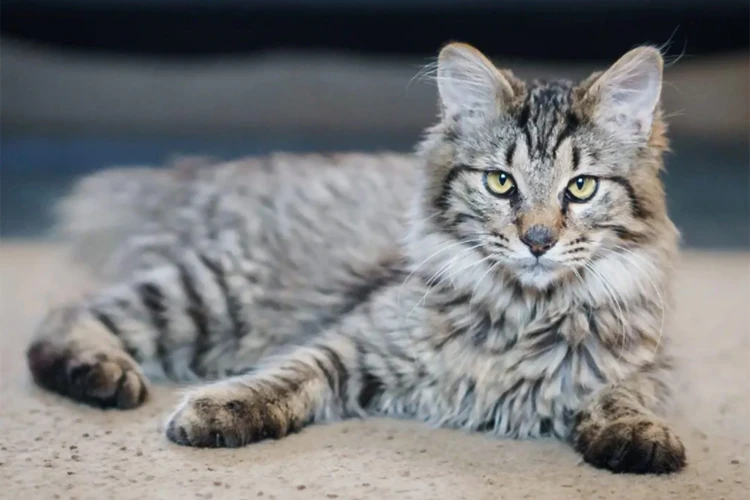
As with many health issues, prevention is key when it comes to obesity in American Bobtail cats. By taking a proactive approach, pet owners can ensure their feline friends maintain a healthy weight and avoid the potential health risks associated with obesity. Fortunately, there are a number of preventative measures that can be taken to keep American Bobtail cats at a healthy weight. From portion control to selecting a healthy diet, here are some effective ways to prevent obesity in American Bobtail cats.
Portion control
Portion control is a vital aspect of preventing obesity in American Bobtail cats. It involves regulating the amount of food your cat consumes to avoid overeating. By controlling the amount of food, you can prevent excess calorie intake, which is one of the leading causes of obesity in cats.
The following table demonstrates the ideal portion sizes for adult American Bobtail cats based on their weight:
| Cat Weight | Portion Size |
|---|---|
| 5-7 lbs | 1/4 – 1/2 cup |
| 8-10 lbs | 1/2 – 3/4 cup |
| 11-15 lbs | 3/4 – 1 cup |
It’s important to note that these portion sizes are just a rough guideline, and you should consult with your veterinarian to determine the appropriate amount of food for your cat. Additionally, these portions should be divided into two to three meals per day to ensure your cat has a steady supply of energy.
Here are some tips to help with portion control:
- Use a measuring cup or food scale to determine the correct amount of food.
- Avoid feeding your cat table scraps or human food, as these can add unnecessary calories to their diet.
- Choose cat food that is labeled “complete and balanced” to ensure your cat is receiving all the necessary nutrients without overfeeding.
- Slowly decrease portion sizes if your cat is currently overweight, to avoid drastic changes that could disrupt their metabolism and cause health problems.
Portion control is an effective way to prevent your American Bobtail cat from becoming obese. By regulating the amount of food they consume and ensuring they receive appropriate nutrition, you can help them live a long and healthy life.
Regular exercise
Keeping your American Bobtail Cat at a healthy weight is crucial for their overall well-being, and regular exercise is an essential component of achieving that goal. Exercise helps burn off excess fat and calories, strengthens muscles, and improves overall fitness. However, it’s essential to take into consideration the cat’s age, weight, and fitness level when designing an exercise routine. Just like in humans, jumping into an intense workout program can cause harm.
One way to introduce regular exercise to your American Bobtail Cat is by starting slowly and gradually increasing the intensity over time. A great way to get started is to play with your cat using toys that encourage physical activity, such as a feather wand or cat tree. Another great form of exercise is interactive games like hide-and-seek or chasing a laser pointer.
It’s also important to make exercise fun for your cat, so they look forward to it. You can keep your cat entertained with various toys, rotate games, and try to come up with new and exciting ways for your cat to move their body. Additionally, you can make your cat’s environment more engaging and cat-friendly by setting up scratching posts, climbing perches, and window perches.
Here’s a table that shows different forms of physical activity you can do with your American Bobtail Cat:
| Activity | Description |
| Interactive Play | Play with your cat using toys such as a feather wand or cat tree. Interactive games like hide-and-seek or chasing a laser pointer are also great. |
| Running and Jumping | Set up obstacle courses or encourage your cat to chase after toys to get their heart rate up. |
| Scratching Posts | Provide scratching posts to encourage your cat to scratch and stretch their muscles. |
| Window Watching | Set up a cozy perch near a window, so your cat can engage in natural behaviors like watching birds and insects. |
Remember, exercise is a crucial part of maintaining your American Bobtail Cat’s health and happiness, but it’s important to start slowly, tailor the exercises to your cat’s fitness level, and make it fun for them.
Selecting a healthy diet
When it comes to preventing obesity in American Bobtail Cats, selecting a healthy diet is critical. It’s essential to choose a diet that provides balanced nutrition and appropriate calorie intake for your cat. Here are some things to consider when selecting a healthy diet for your American Bobtail Cat:
- Read the Labels: Carefully read the food labels to understand the composition of the food. High-quality protein and low levels of carbohydrates are an excellent choice for your furry friend.
- Focus on High-Quality Protein: Cats are obligate carnivores, which means they require meat as the main component of their diet. Choosing food rich in protein, like chicken or turkey, can improve overall health and aid in weight loss.
- Avoid Artificial Additives: Cats do not require artificial preservatives or additives, so try to choose food with natural ingredients and avoid artificial flavorings or colors.
- Consider Supplements: If your cat has any specific dietary needs or medical conditions, consult with your vet and consider incorporating appropriate supplements to their diet.
- Avoid Overfeeding: Work with your veterinarian to determine an appropriate portion size for your cat based on their age, weight, and activity level, and stick to the recommended serving size to prevent overeating.
Selecting a healthy diet is crucial to maintaining a healthy weight for your American Bobtail Cat. By adhering to the guidelines and considering your cat’s specific needs and preferences, you can ensure your cat receives the nutrition required to lead a healthy and active life.
Treatment of obesity in American Bobtail Cats
As with any medical condition, it’s important to address obesity in American Bobtail Cats as early as possible. Obesity can lead to serious health problems in cats, so it’s crucial to take action to help your feline friend lose weight. There are several treatment options available, each with their own benefits and drawbacks. Let’s take a closer look at some effective treatment options for obesity in American Bobtail Cats.
Weight loss diet
A weight loss diet is crucial for helping overweight American Bobtail cats get back to a healthy weight. The first step in creating a weight loss diet is to consult with a veterinarian to determine the best course of action. They may recommend a specific type or brand of cat food that is low in calories and high in protein. Some popular options include Blue Buffalo Weight Control, Wellness Complete Health, and Hill’s Science Diet Perfect Weight.
In addition to selecting an appropriate cat food, it’s important to control portions to ensure that the cat is not overeating. This can be done by using a measuring cup to scoop out appropriate portions or by investing in an automatic feeder that dispenses food at set times throughout the day.
Another important aspect of a weight loss diet is to limit treats and table scraps. While it can be tempting to give your furry friend a treat throughout the day, doing so can quickly add up in calories and prevent weight loss. Instead, try offering low-calorie treats like Greenies Feline Dental Treats or freeze-dried chicken or salmon.
It’s important to note that weight loss should be gradual, as rapid weight loss can be harmful to a cat’s health. Aim for a weight loss of 1-2% per week. This means that for a cat weighing 15 pounds, a healthy weight loss goal would be around 3-6 ounces per week.
In addition to adjusting diet, increasing physical activity is also important for weight loss. Encouraging play with toys or setting up a climbing tree can help increase a cat’s activity levels. However, it’s important to start with short play sessions and gradually increase the amount of exercise to prevent injury or exhaustion.
A weight loss diet is a crucial aspect of helping an overweight American Bobtail cat achieve a healthy weight. Consult with a veterinarian, select a low-calorie cat food, control portions, limit treats, and increase physical activity to help your furry friend reach their weight loss goals.
Increased activity
Increased activity is another key factor in the treatment of obesity in American Bobtail Cats. Just as with humans, simply reducing calorie intake is not always enough to achieve significant weight loss. To increase the daily activity of your cat, you can try some of the following tips:
- Play with your cat using interactive toys such as feather wands or chasing toys. This will help to keep them active while also providing mental stimulation.
- Set up a play area in your home with scratching posts, climbing structures, and tunnels for your cat to explore and play in.
- Take your cat for walks on a harness and leash, starting with short distances and building up gradually. This can be a great way to get your cat active and explore the outdoors in a safe way.
- Use food puzzles or treat-dispensing toys to provide a fun and challenging way for your cat to get their food, while also encouraging them to move around more.
- Encourage your cat to chase a laser pointer or other light toy, being careful not to shine the light directly into their eyes.
It’s important to introduce any new activities gradually, especially if your cat has had a sedentary lifestyle up until now. Start with short play sessions and gradually increase the time and intensity of the activities as your cat becomes more comfortable and active. Remember to always monitor your cat for any signs of discomfort or fatigue during activity, and to consult with your veterinarian before making any significant changes to their exercise routine.
By incorporating increased activity into your cat’s daily routine, along with a balanced diet and portion control, you can help them to achieve and maintain a healthy weight, while also providing them with the physical and mental stimulation they need to thrive.
Veterinarian supervision
When it comes to treating obesity in American Bobtail cats, veterinarian supervision is paramount. A veterinarian can provide a professional evaluation of the cat’s overall health, including their weight and body condition. They can also create a personalized weight-loss plan that takes into account the cat’s specific needs and medical history.
During these regular veterinary visits, the vet can monitor the cat’s weight loss progress and make any necessary adjustments to the plan. The veterinarian may also recommend certain supplements or medications to help the cat’s weight loss and overall health, if necessary.
It’s crucial to note that drastic weight loss in cats can cause health problems, including hepatic lipidosis, or “fatty liver disease.” This is why a veterinarian should always supervise any weight loss plan for an American Bobtail cat. Regular vet visits can also help identify any underlying health issues that may have contributed to the cat’s obesity, such as arthritis or diabetes.
A veterinarian can provide valuable resources and guidance for owners who may be struggling with their cat’s weight loss journey. They can suggest certain types of exercise or activity that may be beneficial for the cat, as well as provide support and encouragement throughout the process.
Overall, veterinarian supervision is an essential component of successful weight loss in American Bobtail cats. It ensures that the cat’s health is protected throughout the process and that their weight loss plan is tailored to their individual needs.
| Benefits of veterinarian supervision for American Bobtail cats |
| Professional evaluation of overall health |
| Personalized weight-loss plan |
| Regular monitoring and adjustments |
| Identification of underlying health issues |
| Valuable resources and guidance for owners |
By working with a veterinarian, American Bobtail cat owners can be confident that their pet is receiving the best possible care and support during their weight loss journey.
Conclusion
After going through the causes, symptoms, and consequences of obesity in American Bobtail Cats, it is clear that this is a serious condition that needs to be addressed. Pet owners must take responsibility for their cat’s health by providing them with a healthy diet, regular exercise, and avoiding overfeeding.
Moreover, regular vet check-ups and consultations may help identify the onset of obesity in these furry felines, which is an advantage in providing them with proper treatment and advice. Pet owners should also be mindful of their cat’s behavior and habits, and immediately consult a veterinarian if they notice any unusual changes.
Obesity can lead to severe health risks, such as diabetes, arthritis, heart disease, and liver disease. Thus, this condition should not be taken lightly. By taking simple preventive measures such as portion control, regular exercise, and a healthy diet, pet owners can ensure their American Bobtail Cats grow up healthy and happy.
In conclusion, obesity is a preventable condition in American Bobtail Cats when pet owners pay attention to their cat’s health and well-being. By providing them with proper care, owners can ensure their furry friends live a long and healthy life. Remember, your furry friend depends on you for their health and happiness, so let’s take a step towards keeping them healthy and fit.
Frequently Asked Questions
Can American Bobtail Cats be genetically predisposed to obesity?
Yes, just like in humans and other animals, genetics can play a role in a cat’s weight and predispose them to obesity. It’s important to monitor their diet and exercise to avoid excessive weight gain.
How much should I feed my American Bobtail Cat?
The amount of food an American Bobtail Cat needs varies based on their age, weight, activity level, and health. Consult with your veterinarian to determine the appropriate portions and feeding schedule for your cat.
Should I free-feed my American Bobtail Cat?
No, free-feeding encourages overeating and can lead to obesity. American Bobtail Cats should have scheduled meals and controlled portions to maintain a healthy weight.
What are the signs of obesity in American Bobtail Cats?
Signs of obesity in American Bobtail Cats include a waddling gait, difficulty breathing, increased sleep, and sagging belly. If you suspect your cat may be obese, consult with your veterinarian.
What health risks are associated with obesity in American Bobtail Cats?
Obesity in American Bobtail Cats can increase the risk of health issues such as diabetes, arthritis, heart disease, and liver disease. It’s important to manage their weight to prevent these conditions.
Can obesity be reversed in American Bobtail Cats?
Yes, with a combination of a healthy diet, increased exercise, and veterinarian supervision, obesity can be reversed in American Bobtail Cats. It’s important to make gradual changes to avoid sudden weight loss and health complications.
What should I look for when selecting a healthy diet for my American Bobtail Cat?
A healthy diet for an American Bobtail Cat should include high-quality protein, essential nutrients, and limited carbohydrates. Look for cat food brands that prioritize these ingredients and consult with your veterinarian for recommendations.
Do American Bobtail Cats need exercise?
Yes, American Bobtail Cats need regular exercise to maintain a healthy weight and prevent health issues. Encourage playtime and provide toys to keep them active and engaged.
How can I help my American Bobtail Cat lose weight?
You can help your American Bobtail Cat lose weight by implementing a weight loss diet, increasing their activity level, and seeking veterinarian supervision. Gradual, consistent changes are key to successful weight loss in cats.
What can happen if obesity in American Bobtail Cats is left untreated?
If obesity in American Bobtail Cats is left untreated, it can lead to serious health complications such as diabetes, arthritis, heart disease, and liver disease. In severe cases, it can even result in a shortened lifespan. It’s important to address weight management for the health and wellbeing of your cat.

